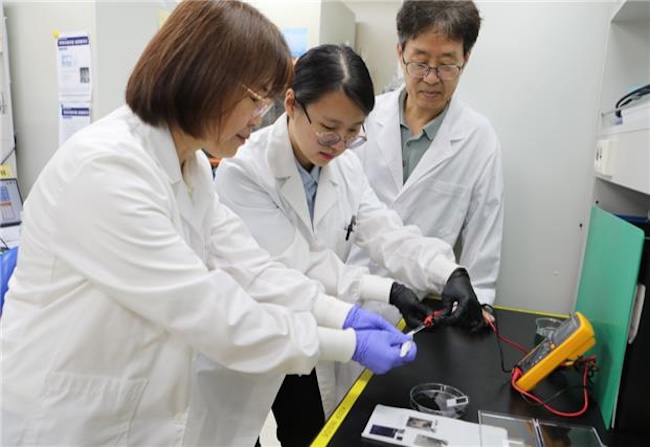
Researchers at the Korea Institute of Machinery and Materials (KIMM) have developed an energy harvester capable of generating electricity from seawater. (Image courtesy of the Korea Institute of Machinery and Materials)
DAEJEON, Sept. 12 (Korea Bizwire) – In a breakthrough that could revolutionize sustainable energy production, researchers at the Korea Institute of Machinery and Materials (KIMM) have developed an energy harvester capable of generating electricity from seawater, the institute announced on September 11.
Energy harvesters are devices designed to capture and convert ambient energy sources, such as vibrations or pressure, into usable electrical energy.
The new technology, however, takes this concept a step further by tapping into an abundant natural resource: the ocean.
The research team, led by Hyun Seung-min and So Hye-mi of KIMM, in collaboration with Jeong Soo-hwan from Kyungpook National University, has created a device that utilizes carbon nanotubes and graphene oxide film as positive and negative electrodes, respectively, with seawater serving as the electrolyte.

What sets this technology apart from previous water-based energy harvesters is its ability to recover the initial open-circuit voltage without the need for external energy input, allowing for continuous reuse. (Image courtesy of Pixabay/CCL)
The mechanism behind this innovative harvester relies on the redistribution of ions between the two electrodes. Positively charged ions in the electrolyte are drawn more strongly to the negative electrode, which has a high concentration of oxygen functional groups.
This ionic rearrangement generates an electrical potential difference between the electrodes.
What sets this technology apart from previous water-based energy harvesters is its ability to recover the initial open-circuit voltage without the need for external energy input, allowing for continuous reuse.
This self-regenerating feature marks a significant advancement in sustainable energy production.
The power density of the new harvester is 4.2 times greater than that of conventional ion hydrogel-based water energy harvesters.
This improvement means the device can generate sufficient power to operate small devices such as calculators and watches.
Hyun, the lead researcher on the project, highlighted the potential applications of this technology.
“This eco-friendly energy harvesting technique, capable of continuous self-charging, could be utilized in monitoring devices that measure sea temperature and chemical oxygen demand,” he said.
Kevin Lee (kevinlee@koreabizwire.com)






